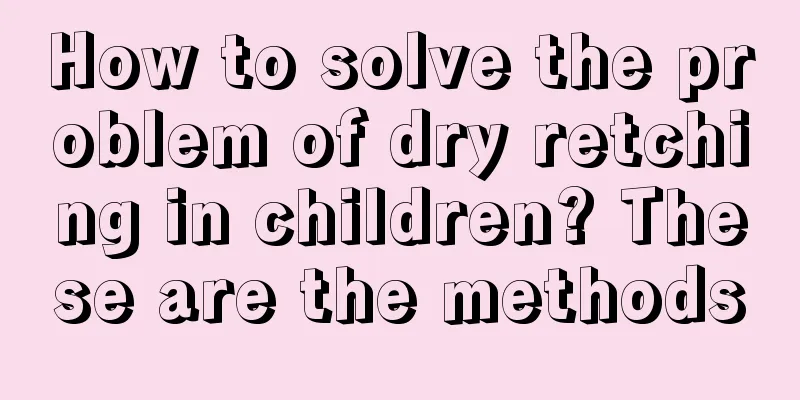Is it good to fill teeth for children?

|
There are both advantages and disadvantages to filling children's teeth. The advantage is that for children who cannot change their teeth, it can prevent food debris from being retained in the tooth cavity and can also avoid symptoms of tooth pain. However, fillings can easily damage the gums and cause abnormalities in surrounding teeth. Therefore, it is recommended that everyone can understand the advantages and disadvantages of filling children's teeth.
Tooth decay can cause pain to children, and in severe cases can even lead to developmental problems in children. Moreover, if tooth decay continues to develop, it will not only cause severe pain to the child, but will also lead to poor development of permanent teeth in the future. Therefore, dental fillings are also necessary for children. Does dental fillings hurt children? If the caries is deep and has damaged the nerves, the pain will be more severe when filling the tooth. Filling a shallow tooth with caries will cause little or no pain. If the cavity to be filled is shallow, then the filling will not be painful. If the cavity is deep and has rotted to the dental nerve, it may be painful. When the doctor treats the child, he will first clean the caries in the decayed teeth and then fill the teeth. When removing the caries, the instrument will touch the dentin and there will be pain. Generally, dentists’ techniques are gentle and won’t cause too much pain. For simple superficial caries and moderate caries, it is necessary to remove the decayed materials in the cavity and prepare a certain cavity shape for filling. During the process of caries removal, different degrees of sensitivity will be felt because the dentin layer is touched. For patients with deep caries, because the cavity is deep and close to the pulp, the pain when removing the decayed matter will be more obvious. However, in order to judge the vitality of the pulp and whether there is a pulp penetration point, it is generally not recommended to inject anesthetics into the patient. If the caries has reached the pulp and caused pulpitis, the pain will be more obvious, but at this time the pulp has been confirmed. The doctor will give the patient an appropriate injection of local anesthetic. When getting a tooth filled, going to a regular hospital and undergoing regular procedures can minimize pain and provide better results. Therefore, it is important to choose a regular hospital for tooth filling. What are the steps for children's dental fillings? Children's tooth filling is divided into three steps: cavity preparation, filling with filling materials and removal of debris. 1. Cavity preparation: Before filling a tooth, a cavity needs to be made on the decayed tooth to establish a good retention shape and resistance shape to prevent the filling from breaking, falling off, or not fitting tightly, which may cause secondary caries. If you need to see the child's tooth root development, you need to take an X-ray. 2. Filling with dental filling materials: isolate saliva, disinfect the cavity, prepare filling materials to fill the cavity, and carve the shape. 3. Remove debris: After filling the tooth with filling materials, the dentist will polish the tooth surface and clean the debris attached to the tooth. What are the materials used for children's dental fillings? There are four common types of dental filling materials on the market: gold fillings, silver powder (silver) fillings, synthetic (plastic) resins and porcelain fillings. Gold fillings: Generally speaking, gold fillings are not used for children’s teeth. However, gold fillings are less likely to be rejected by gum tissue and can last for more than 20 years. For the reasons listed above, many dental authorities consider gold to be the best filling. Silver fillings: commonly used in unusual areas of the teeth. More durable and relatively cheap. Silver is darker in color and more noticeable than porcelain or composite fillings. Synthetic (plastic) resin: suitable for filling small areas, with a service life of 3-5 years. The synthetic resin is the same color as your teeth, so it has a more natural appearance. Place the filling mixture in the tooth cavity until the filling hardens. However, since synthetic fillers will break or wear out over time, they are not suitable for filling large areas. Porcelain fillings: Also called porcelain inlays, these fillings match the color of your teeth and are less likely to stain. Most teeth can generally be restored with porcelain materials. The cost is comparable to that of a gold filling. |
<<: When is the best time for baby's skin to fall off?
>>: Why do children lose their toenails?
Recommend
Is it necessary to supplement cod liver oil for newborns?
Cod liver oil is a substance extracted from fish ...
How should tracheitis with sputum in children be treated?
If a child has influenza and is not treated immed...
Can a 1 year old child eat mango?
Children around one year old may be in the weanin...
Which month is the golden period for growing taller?
Children nowadays are developing well, and many o...
What to do if your 50-day-old baby has a stuffy nose
Babies who are about 50 days old are already one ...
Children have cold hands and feet
We all know that when babies are young, they are ...
Baby's fists tremble when he stretches
Parents are very sensitive to any changes in thei...
What are the reasons why babies wake up easily when sleeping?
The baby's growth cannot be separated from th...
What should children eat when they have chickenpox?
During childhood, children may face various disea...
What to do if children have allergic dermatitis? These methods are very effective
If a child develops allergic dermatitis, the best...
What should I do if my child hits his head on the ground?
Children like playing more in their daily lives. ...
Who does a boy inherit more genes from?
I believe that everyone is familiar with genetics...
Can children use cooling oil?
Mosquitoes are easy to breed in summer, and babie...
Symptoms of sore throat in newborns
Throat inflammation is a common symptom in newbor...
The timing of children's tooth replacement
We know that teeth are very important to the huma...









